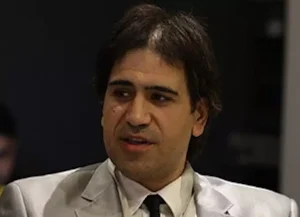Khairallah Khairallah’s View on Iran’s Regime

What will bring food to the table for the Iranians is the return of the country to being a normal state that cares about its internal affairs instead of investing in sectarian militias that have so far destroyed Iraq, Syria, Lebanon and part of Yemen
At last, the West woke up to Iran’s missiles and drones, just as it woke up to the internal crisis that the “Islamic Republic” faces.
The crisis in Tehran stems from the fact that the regime could not ever reconcile itself with the Iranian people.
What can be understood from the recent summit in Washington between President Joe Biden and President Emmanuel Macron is that there is a new Western perspective on the Iranian issue. This perspective takes into account Iran’s internal dynamic on the one hand and the Iranian involvement in the Ukrainian war, on the other.
The West has begun to admit that missiles and drones cannot feed citizens in a country where more than half of the population lives below the poverty line.
Even Robert Malley, who is in charge of the Iranian file in Washington, has begun to reconsider his position on Tehran’s behaviour, after being one of the most supportive voices for a deal with the “Islamic Republic” regarding its nuclear programme.
Malley spoke of a greater American focus on Iranian arming of Russia in Vladimir Putin’s war on Ukraine and of US attention to the oppression that Iranians face. He pointed out that this focus on the relationship between Iran and Russia and on Iran’s domestic situation has come to outweigh the drive to revive the 2015 agreement on the Iranian nuclear programme.
Since its inception in 1979, the Iranian regime has endeavoured to export its internal crisis beyond its borders. Today, thanks primarily to Iranian women, we can see that this policy has backfired, especially after the regime lost its authority and was forced to abandon one of its pillars, the morality police.
It is unfortunate that successive US administrations, especially the Obama White House, were preoccupied with the Iranian nuclear programme and how to appease the “Islamic Republic” instead of confronting the reality represented by the danger posed by the Iranian regime to the countries of the region on the one hand and to world peace on the other.
Iran’s involvement in the Ukrainian war in support of Putin, allowed the West to finally discover how serious the regime established by Ayatollah Khomeini, was about “exporting the revolution,” that is, exporting ruin, misery and sectarian impulses to the countries of the region.
It seemed permissible for a while to export ruin to Arab countries, but the US and Europe could not let Iran enter the fray of Russia’s showdown with the West through the war that Putin is waging against Ukraine.
Ballistic missiles and drones do not change anything on the regional level, except spooking Iran’s neighbours and pushing them to look for whatever means to protect themselves.
Iran has used its missiles to target Iraqi cities between 1980 and 1988 during the Iran-Iraq war and to justify Israeli attacks on Lebanon or the Gaza Strip at a later stage.
There is no purpose in revisiting the past now as history alone will tell us whether Saddam had any other choice but to launch an insane war that backfired on him and which the Khomeini regime did everything to spark.
Most importantly, Iran is currently using missiles and drones for political purposes, in the service of its expansionist project.
In so doing it is also confirming that there is no major difference between an Iranian president and his successor, as long as the “Revolutionary Guards” control the country and its economy.
There were several Arab attempts to alert the United States to the danger of the Iranian expansionist project. However, those efforts fell on deaf ears in Washington and even in Paris.
How will the US administration respond to the Iranian challenge, which has begun to take a different shape in the light of what is happening inside the “Islamic Republic”?
It is a big question with great significance.
It could mean a lot to the Iranian regime itself, which is still searching for an outside enemy that does not exist. It wants to prove once again, to Iranians first, that it does not fear the United States, but is in fact in the middle of a confrontation with America.
Do such hollow slogans still deceive anyone?
It is no coincidence that the Iranian regime is seeking these days to escape from its internal crisis through accusations that have nothing to do with reality. It pins blame on all governments in the US, Europe and the Arab Gulf countries, holding them responsible for the ongoing popular uprising that has erupted on September 16 with the death of Kurdish young woman. Mahsa Amini at the hands of the morality police.
In the final analysis, the overwhelming majority of Iranian people adhere to a culture of life. Iranians are not North Koreans. They know that the nuclear bomb as well as missiles and drones will not provide them with bread.
What instead will bring food to the table for Iranians is the return of the country to being a normal state that cares about its internal affairs instead of investing in sectarian militias that have so far destroyed Iraq, Syria, Lebanon and parts of Yemen.
Want to chase the pulse of North Africa?
Subscribe to receive our FREE weekly PDF magazine













